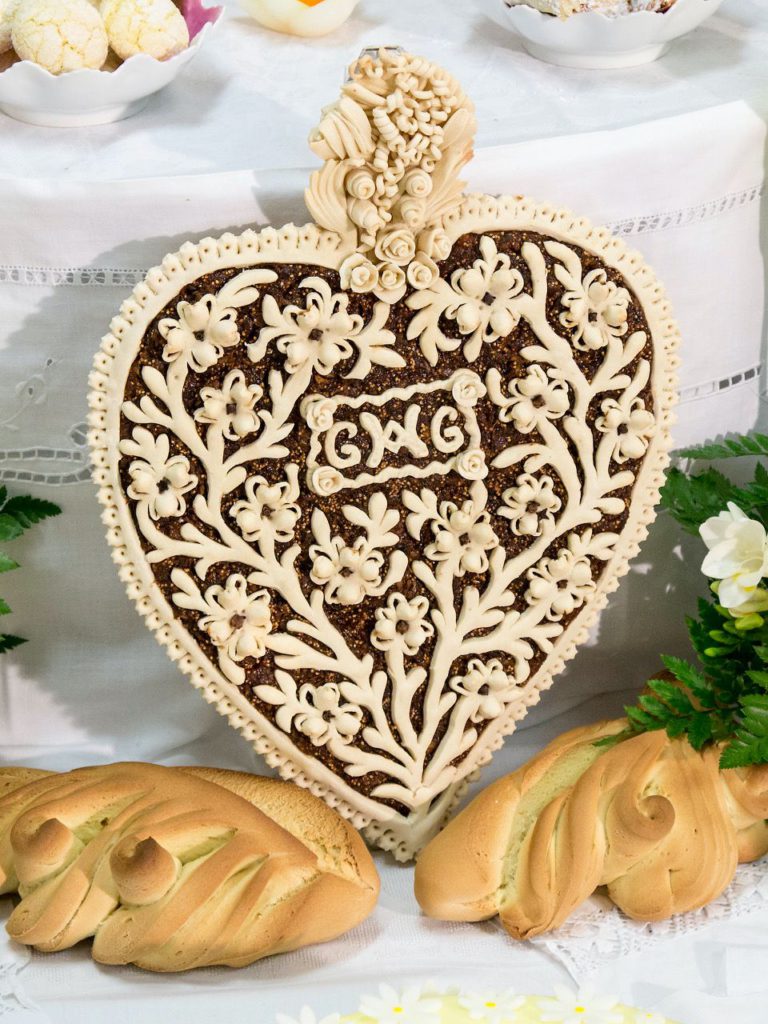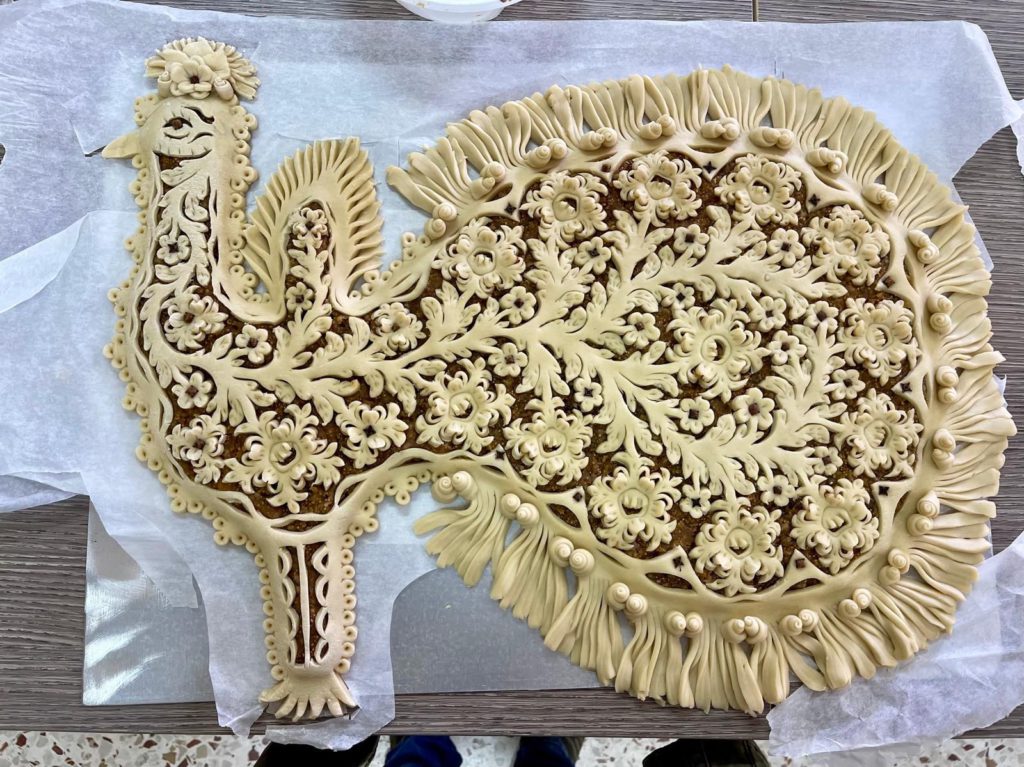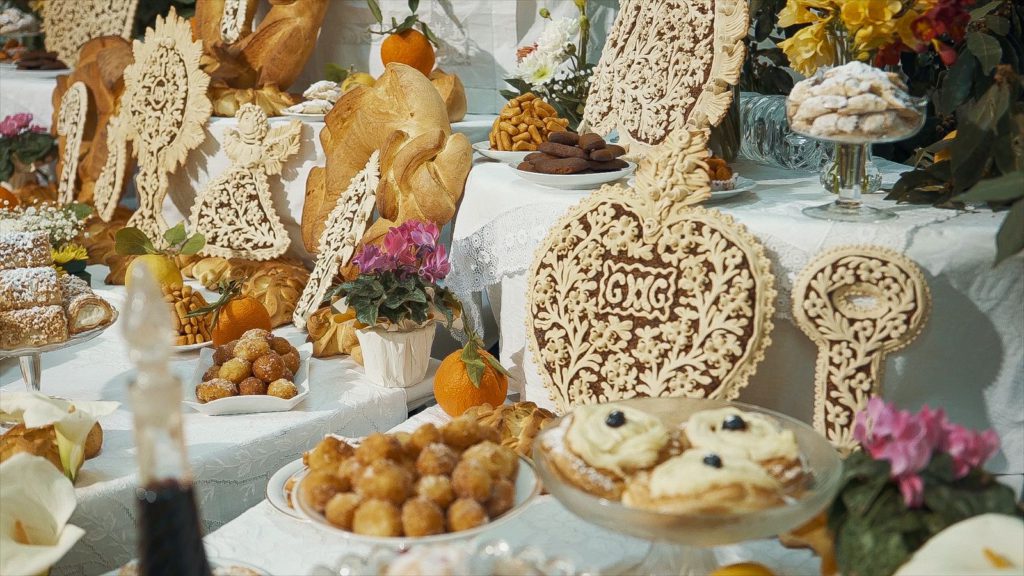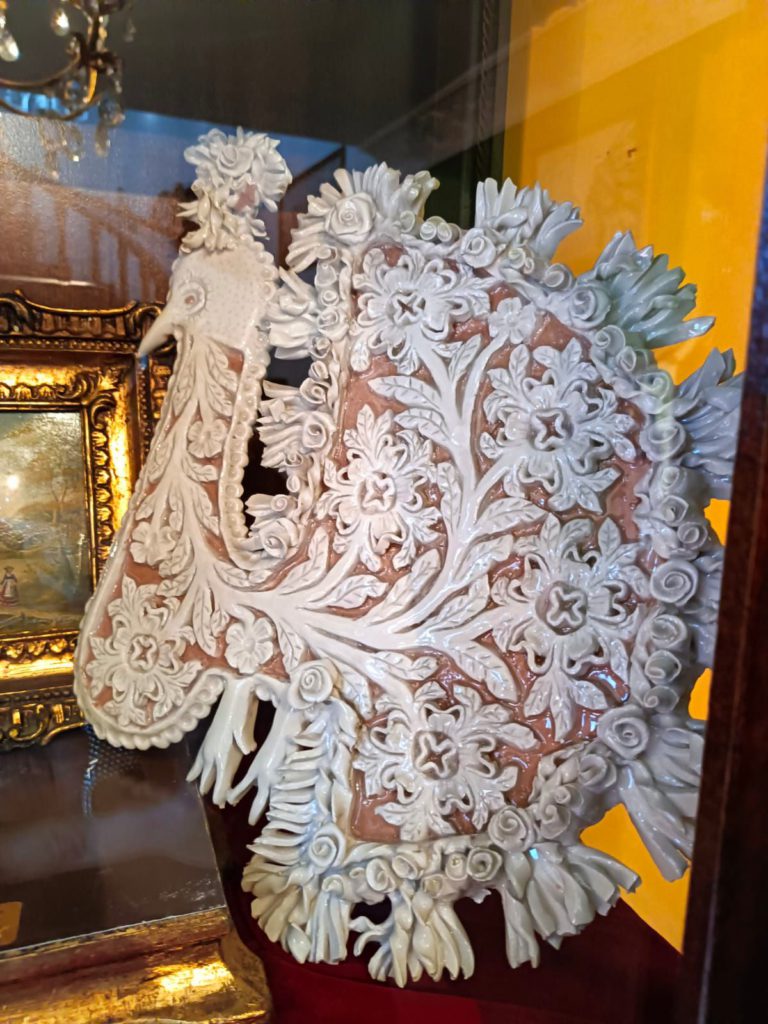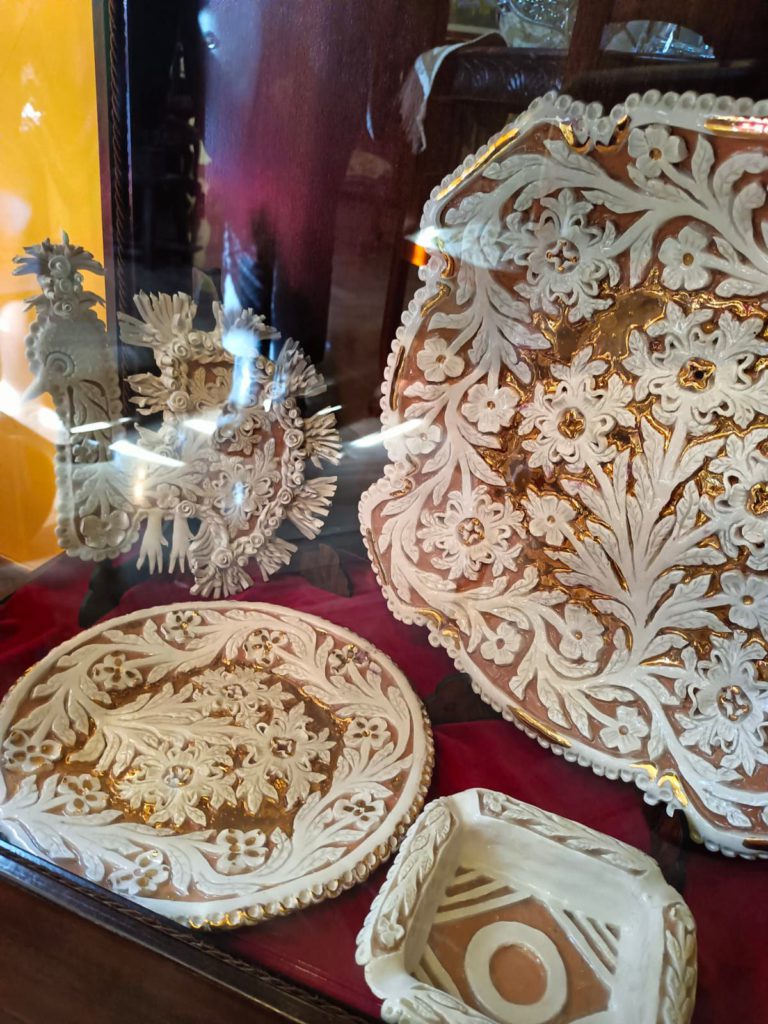The “Squartucciato” of Poggioreale
The squartucciato is a symbolic, artisanal bread crafted for the Feast of Saint Joseph in Poggioreale (Sicily). Originally made from layered sheets of bread dough filled with a fig paste, the upper layer is intricately carved to reveal the darker filling beneath, creating religious motifs with deep symbolic meaning. Each shape represents a Christian concept: the monstrance symbolizes the body of Christ; angels signify adoration; the heart bears the names Jesus, Mary, and Joseph, representing the Holy Family; the cross stands for Christ’s Passion; the palm indicates the Virgin Mary’s purity; the staff refers to Joseph’s role as guardian; peacocks embody divine majesty; the jug symbolizes Christ’s first miracle; the fish denotes Christianity; and the shoes refer to the liberation brought by Jesus.
The crafting process involves high precision. After layering, artisans cut and decorate the surface with floral designs and sacred figures, adopting a distinctly Baroque style. The term squartucciato itself reflects the technique—fine, detailed carving.
The tradition has since evolved into a form of ceramic art. Onofria Salvaggio (known as “Nellina”), born in 1942 in Poggioreale, is the custodian of the traditional bread-making art and pioneered the transformation by combining red and white clays. The white clay, which resembles porcelain when fired, is applied over the red and carved similarly to the bread version. Key symbolic elements, such as the uninterrupted stem (representing the Tree of Life), remain central. The ceramic form addresses the impermanence of bread-based works, which were once discarded after rituals. This innovation allows for the preservation and dissemination of cultural heritage.
Squartucciato ceramics now function both as devotional items and decorative objects, reinforcing Poggioreale’s identity. Artists like Antonino Tusarolo and Marilena Salvato continue the tradition, helping elevate it to a cultural brand.
The transformation from bread to ceramic represents continuity through adaptation, preserving meaning while innovating the medium. In this way, the squartucciato stands as a dynamic expression of Poggioreale’s cultural and spiritual heritage.
The squartucciato operates as both a religious symbol and a cultural artefact, embodying collective identity and social cohesion. Its creation involves both manual skill and intellectual tradition, bridging craftsmanship and folk art. As such, it reflects a broader phenomenon in popular art: rooted in repetition, symbolic depth, and community participation rather than individual aesthetic pursuit.
This element has been included in the Register of Intangible Heritage of local interest of the Municipality of Poggioreale, as part of Intervention 4: “Activation of the Observatory on the Intangible Cultural Heritage of the Territory through the application of the REIL methodology – Register of Intangible Heritage of Local Interest”, within the “Progetto di rigenerazione Poggioreale, vecchio e nuovo centro” project, funded by the NRRP (National Recovery and Resilience Plan), Mission: Digitalisation, innovation, competitiveness, culture and tourism, Component: Tourism and culture 4.0, Investment 2.1 “Attractiveness of villages.” CUP: E44H22000040006.
